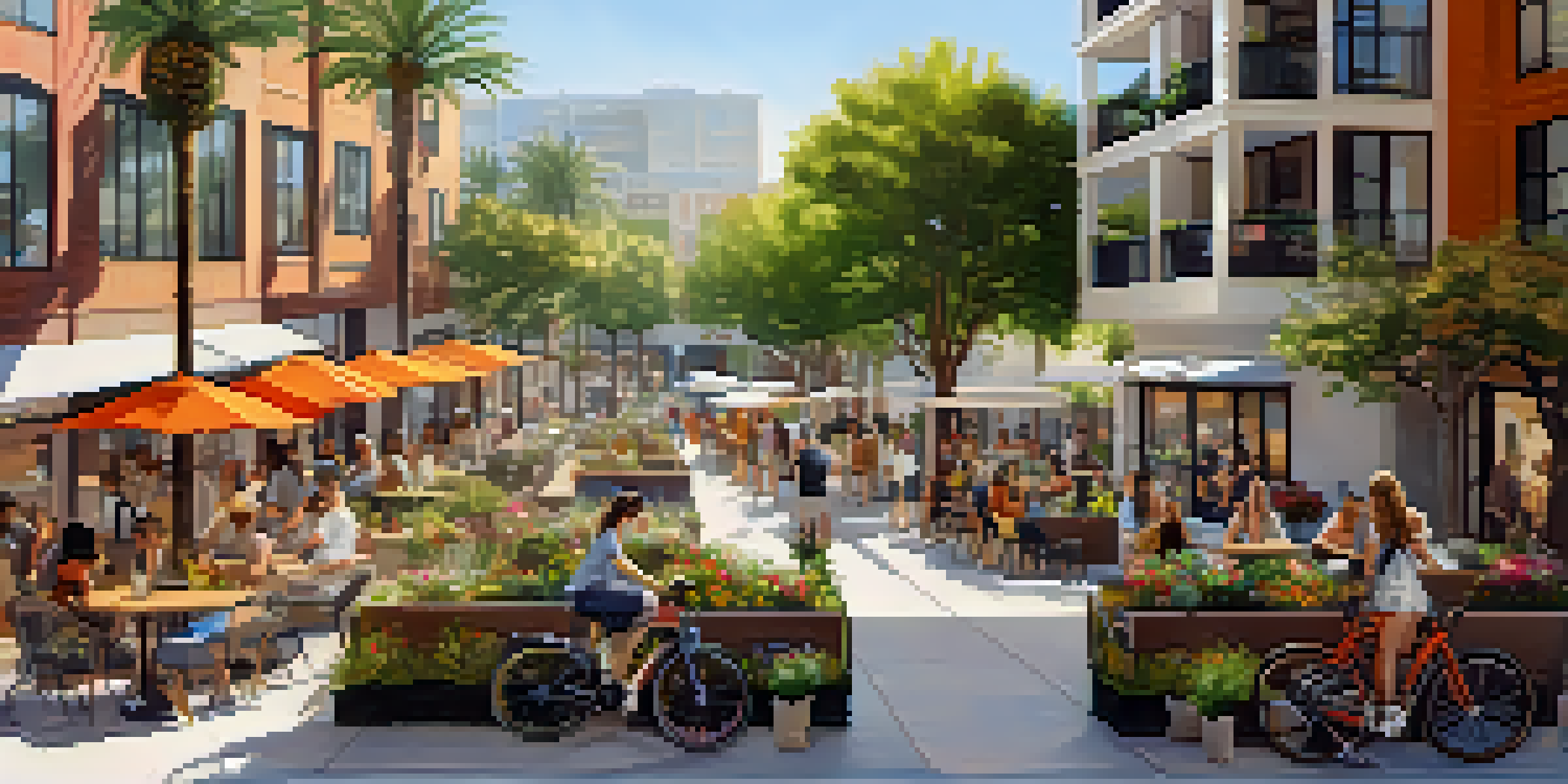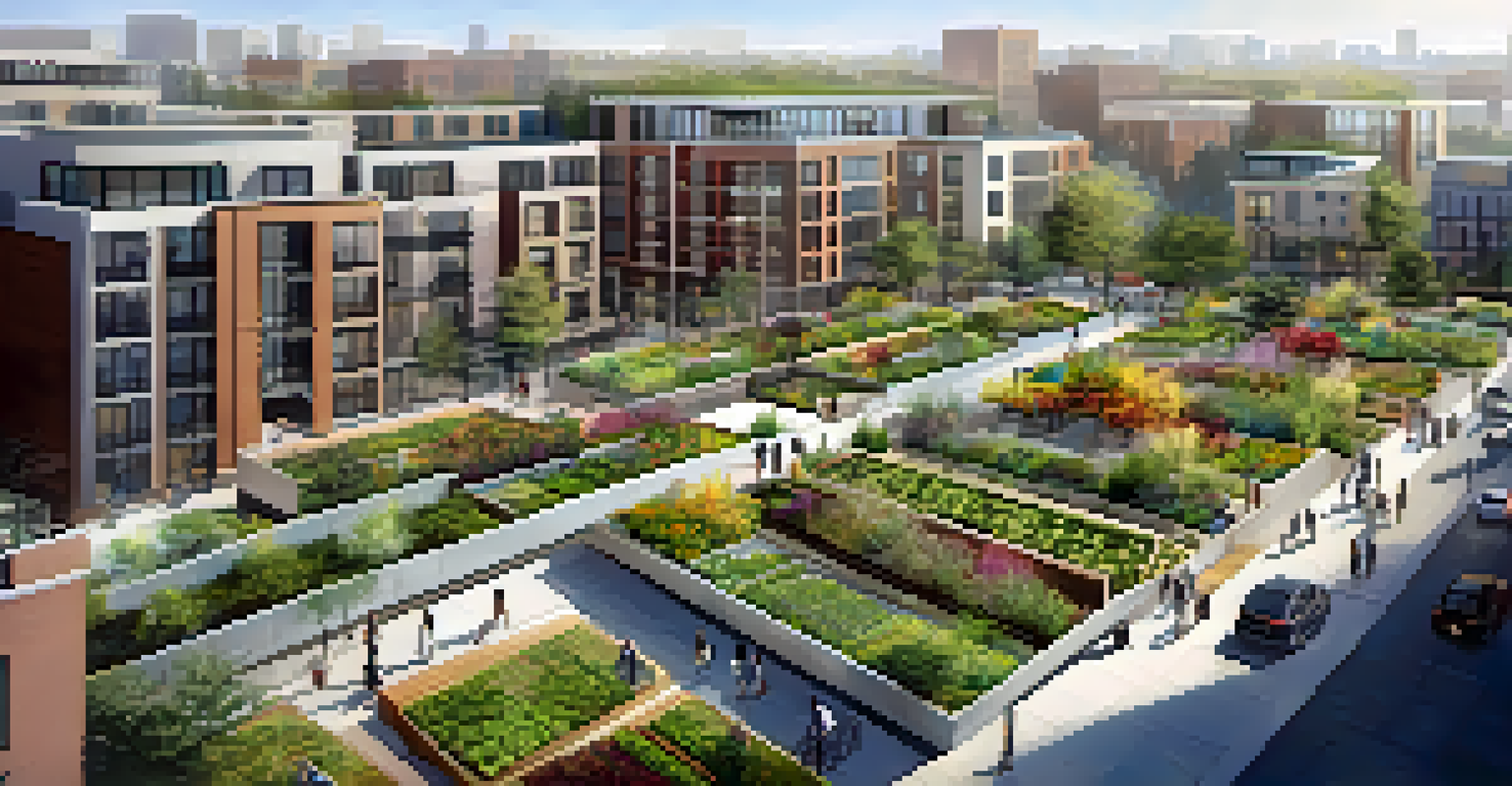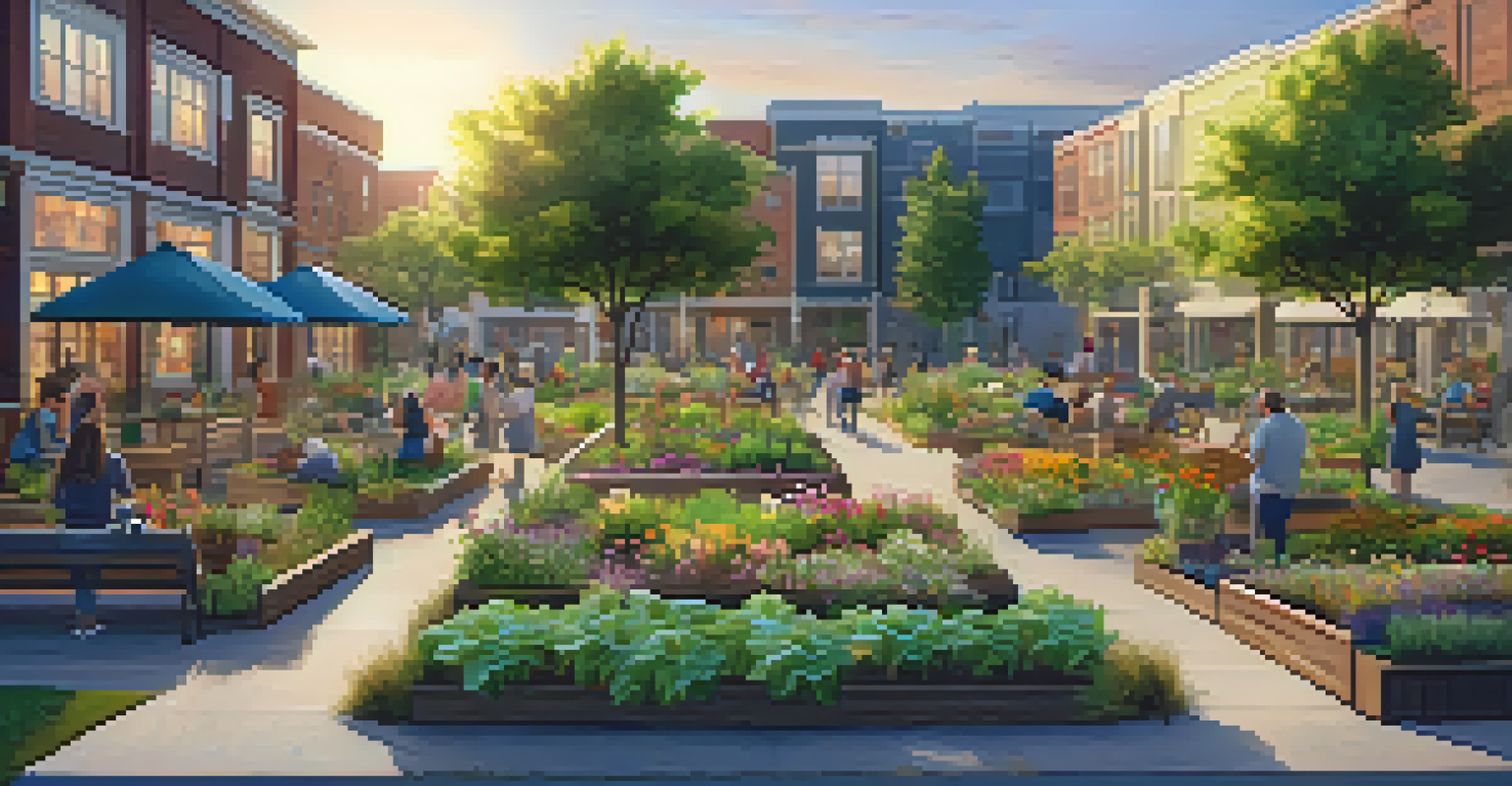The Future of Mixed-Use Developments in Los Angeles

Understanding Mixed-Use Developments and Their Appeal
Mixed-use developments combine residential, commercial, and recreational spaces into one cohesive area. This innovative approach caters to the modern lifestyle, where convenience and accessibility are paramount. Imagine living in an apartment above a café or a grocery store; it’s not just a dream but a reality in these vibrant spaces.
The future of cities is not about the buildings, but about the people who inhabit them.
The appeal lies in their ability to create a community feel, fostering social interactions among residents and businesses. This design encourages walking and biking, reducing reliance on cars, which is a significant plus for sustainability. Plus, with the rising emphasis on work-life balance, these developments offer the perfect solution by blending living, working, and leisure.
As urban areas like Los Angeles continue to grow, the demand for mixed-use developments is on the rise. They provide an opportunity to revitalize underused spaces and create lively neighborhoods. Ultimately, they represent a shift towards more sustainable and community-focused urban planning.
Current Trends in Mixed-Use Developments in LA
In Los Angeles, we’re witnessing a surge in mixed-use projects that prioritize pedestrian-friendly designs. Developers are increasingly focusing on creating spaces that encourage walking and community gatherings. This trend aligns with the city's efforts to combat traffic congestion and promote healthier lifestyles.

Another notable trend is the inclusion of green spaces within these developments. Parks, rooftop gardens, and community farms are becoming essential features, providing residents with a connection to nature amid the urban hustle. This not only enhances aesthetics but also improves mental well-being and encourages outdoor activities.
Community-Centric Urban Living
Mixed-use developments foster a sense of community by integrating residential, commercial, and recreational spaces.
Furthermore, the integration of technology is becoming more prevalent in these spaces. Smart home features, energy-efficient designs, and high-speed internet access are just a few examples of how developers are meeting the needs of modern residents. As trends continue to evolve, mixed-use developments in LA are setting the stage for a more integrated urban living experience.
The Role of Sustainable Design in Future Developments
Sustainability is at the forefront of mixed-use development planning in Los Angeles. Developers are now prioritizing eco-friendly materials and energy-efficient systems to minimize the environmental impact. This approach not only helps the planet but also attracts eco-conscious residents and businesses.
Sustainability is about the choices we make every day in the way we live, work, and play.
Moreover, the incorporation of renewable energy sources, such as solar panels, is becoming increasingly common. These features reduce long-term costs for residents while promoting a greener lifestyle. Imagine living in a community where your energy needs are met by the sun—a step forward in sustainable urban living.
As Los Angeles continues to grapple with climate challenges, the shift towards sustainable design in mixed-use developments will be crucial. These projects serve as a model for how cities can adapt to changing environmental needs while providing quality living conditions. It's a win-win for both residents and the planet.
Challenges Facing Mixed-Use Developments in LA
Despite their many advantages, mixed-use developments in Los Angeles face several challenges. One major hurdle is navigating the complex zoning laws and regulations that can delay project approvals. Developers often spend significant time and resources to ensure compliance, which can stall progress.
Community opposition is another challenge that can hinder these developments. Residents may be concerned about increased traffic, noise, or changes to the neighborhood's character. Engaging with the community early in the planning process is essential for developers to address concerns and foster support.
Sustainability Drives Design
Eco-friendly materials and renewable energy sources are becoming integral to mixed-use projects, promoting a greener lifestyle.
Additionally, the rising cost of land in Los Angeles poses a financial challenge for mixed-use projects. Balancing affordability with quality design can be difficult, often leading to compromises that may affect the overall vision. However, overcoming these challenges is essential for the future of urban living in LA.
The Impact of COVID-19 on Mixed-Use Development Trends
The COVID-19 pandemic has reshaped how we think about urban living, impacting mixed-use development trends. With more people working from home, there has been a shift in demand for residential spaces that also accommodate home offices. Developers are now focusing on creating adaptable spaces that meet this new lifestyle.
Additionally, the importance of outdoor spaces has been highlighted during the pandemic. Developers are incorporating larger balconies, communal gardens, and open-air gathering areas into their designs. This shift not only enhances the living experience but also promotes safety and well-being.
As we move forward, mixed-use developments will likely continue evolving in response to these changes. The lessons learned from the pandemic will influence future designs, making them more resilient and adaptable to whatever challenges may arise. Ultimately, this evolution can lead to more vibrant and functional urban spaces.
The Future of Transportation in Mixed-Use Developments
Transportation is a critical aspect of mixed-use developments, especially in a sprawling city like Los Angeles. Future projects are increasingly incorporating public transit options, such as bus stops and metro stations, within walking distance. This integration encourages residents to utilize public transport, reducing traffic congestion and pollution.
Moreover, the inclusion of bike lanes and pedestrian pathways is becoming standard practice. Developers are recognizing the need for safe and accessible routes that promote walking and cycling. Imagine a neighborhood where you can easily hop on your bike and reach your favorite café or office without worrying about traffic.
Adapting to New Norms
The COVID-19 pandemic has shifted demands in mixed-use developments, emphasizing the need for adaptable living spaces and outdoor areas.
As electric vehicles gain popularity, mixed-use developments are also adapting by providing charging stations. This forward-thinking approach not only meets the needs of eco-conscious residents but also positions these developments as leaders in sustainable urban living. The future of transportation in LA's mixed-use spaces is bright and filled with possibilities.
Case Studies of Successful Mixed-Use Developments in LA
Several mixed-use developments in Los Angeles serve as shining examples of success. One notable project is The Grove, which combines shopping, dining, and entertainment in a vibrant outdoor setting. This development has become a beloved destination, showcasing how mixed-use spaces can thrive.
Another impressive example is the Arts District in Downtown LA, where former warehouses have been transformed into lofts, galleries, and restaurants. This revitalization has created a dynamic community that attracts both locals and tourists, proving that mixed-use developments can breathe new life into forgotten areas.

These case studies highlight the potential of mixed-use developments to create lively, engaged communities. By learning from these successes, developers can continue to innovate and design spaces that enhance urban living in Los Angeles. The future of mixed-use developments holds great promise, driven by creativity and community engagement.